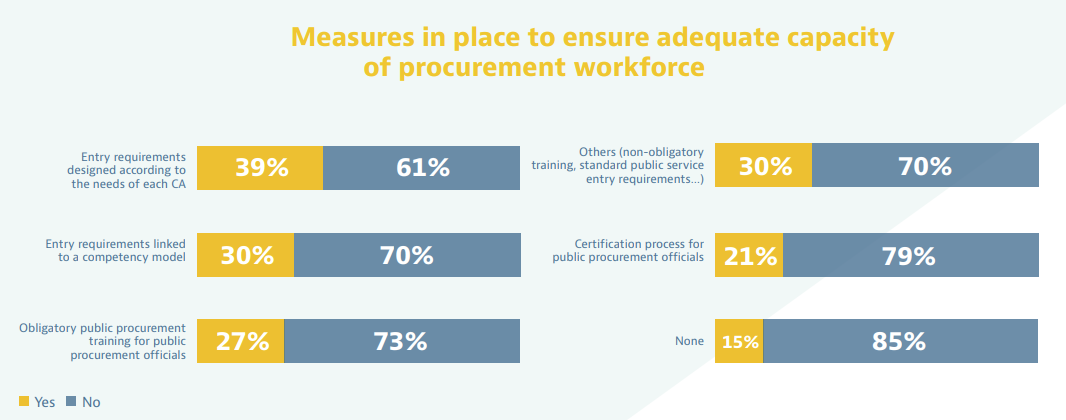This assessment has two different dimensions: (i) the current professionalisation system and (ii) the current level of capability of the public procurement workforce. It helps identify challenges and gaps, and serves as the basis for a strategy and/or action plan. In their assessments, countries can draw on frameworks such as the 2015 OECD Recommendation on Public Procurement and assessment tools such as the Supplementary Module on Professionalisation of the Methodology for Assessing Procurement Systems (MAPS) and the European competency framework for public procurement professionals (ProcurCompEU).
Public procurement competency
Public procurement represents a large share of public spending. Governments can use it to achieve their policy objectives such as a greener economy, stimulating innovation or promoting responsible business conduct. This makes public procurement a complex function requiring a specific skillset for public procurement officials. This is why professionalising the public procurement workforce has become a priority in countries’ public procurement reforms.



